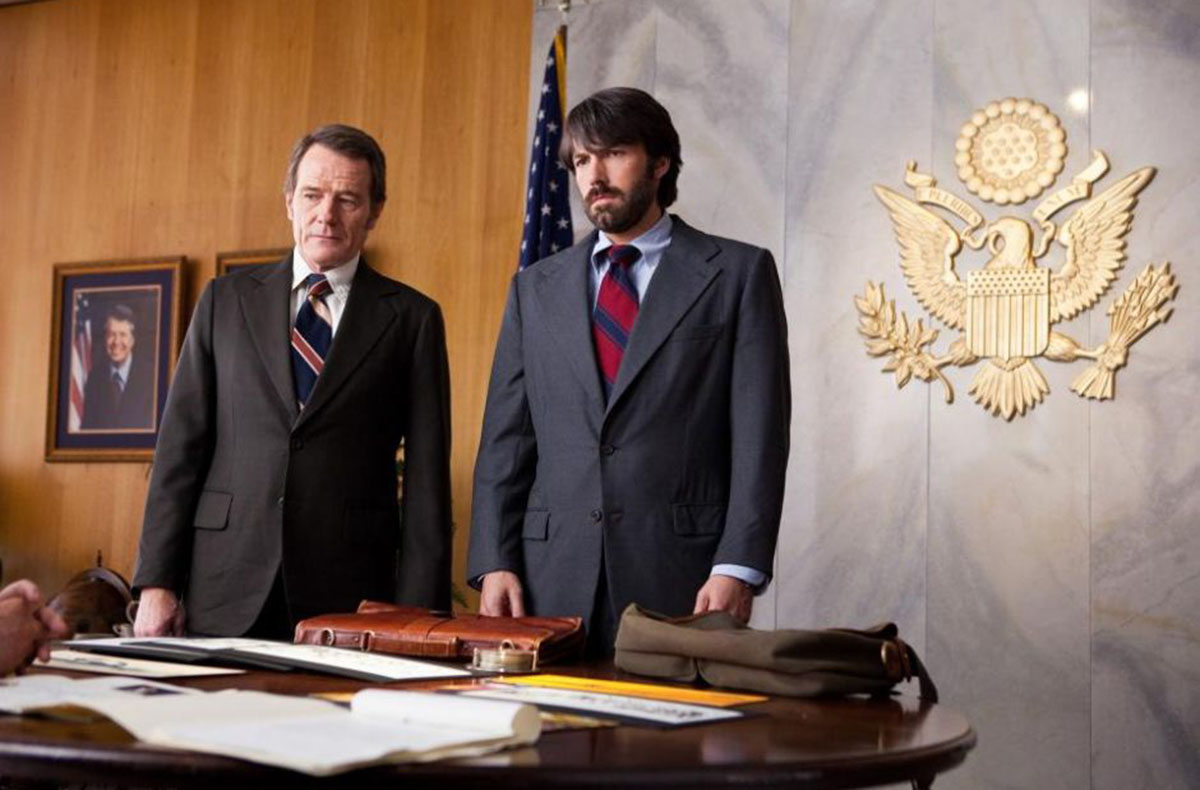The CIA Fact Checked Parts of Argo on Twitter

Courtesy Photo
Back in June, the CIA made a huge splash on Twitter when they finally followed in the footsteps of other governmental agencies by joining the social media platform, sending out an epic first tweet that landed them on the front page of nearly every website.
Continuing their attempt to keep followers interested in their internal affairs—at least the ones that are no longer classified—the CIA marked the 35th anniversary of the Iran Hostage Crisis and rescue of six U.S. diplomats by fact-checking Argo, Ben Affleck’s 2013 Hollywood version of what transpired during the rescue operation overseas.
“We love Argo, the Academy Award-winning film by Ben Affleck,” the CIA tweeted to its 750,000 followers on November 7. “Today, we tell you what’s ‘reel’ [versus] ‘real.’”
What followed was a collection of tweets over the course of five hours that included comparisons between what was portrayed on the screen, and what went down between 1979 and 1980, when CIA operatives concocted and executed an elaborate plan to sneak six State Department personnel out of Tehran, Iran, after militants seized the U.S. Embassy.
Before making the distinctions between fact and fiction clear (it’s understandable and expected that Affleck would pump the film version full of action-packed scenes and narrative—it’s Hollywood, after all), the CIA thanked Affleck for portraying the major players involved as “innovative, brave, and creative” individuals, characteristics they put to use during the mission.
Here’s the breakdown:
Hiding Out
Reel Argo: When the U.S. Embassy was overtaken in the movie, the six diplomats go straight to the Canadian ambassador’s house, using the backstreets, where they then lived for three months.
Real Argo: What actually happened, according to the CIA, is five of them went to different locations until they all ended up at the homes of the Canadian Ambassador and the Department Chief of Mission. One of those escapees first slept on the floor inside the Swedish embassy before making his way to the Canadian Ambassador’s two weeks later.
A Plan of Action
Reel Argo: Only one CIA officer goes to Tehran, Iran, to help get the six American diplomats out of the country and home safely, using his creativity to devise an elaborate plan with the help of others.
Real Argo: In reality, it was two CIA officers with notable forgery and exfiltration skills who used their talents and knowledge to get the six people out of Iran safely, the CIA clarified. Unfortunately, having two protagonists in a leading role doesn’t bode well for the big screen.
Checking Out the Scene
Reel Argo: In the film, the CIA officer and the six diplomats head into town to pretend they are scouting movie locations, in character, and almost run into some trouble and get caught.
Real Argo: None of the “Canadian Six” ever left the comforts of the embassy, and they hunkered down for the full 79 days as the CIA prepared to get them out of Iran under the guise of new Canadian identities, and by creating a faux-Hollywood movie production.
Nearly Grounded
Reel Argo: As the Americans diplomats head to the airport using fake passports, set to fly to Canada for safety, they are stopped by guards, creating a tense, dramatic scene. The guards make a call to “Studio Six,” the fake studio set up by Affleck and crew, to verify their identity. They fool the guards, and board the plane.
Real Argo: “It didn’t happen,” according to the CIA. That bit was added in to create some drama and leave viewers on the edge of their seats. The CIA said an early flight was picked so airline officials would be sleepy and the Revolutionary Guards would still be in bed.
Shred it and Forget it
Reel Argo: In an attempt to hide the identities of the Americans inside the U.S. Embassy, workers start feverishly shredding documents so that they can’t be tracked down. In the movie, student Islamic militants sift through the shredded bits of paper and meticulously piece them back together to reveal some of the people from the embassy were missing. This leads to a final chase scene as the plane leave the runway, adding a heart-stopping ending to the film.
Real Argo: This might be one of the closest examples of what happened in real life being carried over to the movie. Documents were destroyed, and they were pieced back together by “skilled carpet weavers” to reveal the Americans’ identities. But there was no last-minute chase on the tarmac—that was an Affleck add-in. However, the CIA admits some Hollywood-worthy tension did arise. “There was an hour long mechanical delay, other than that the escape could not have gone better.”


